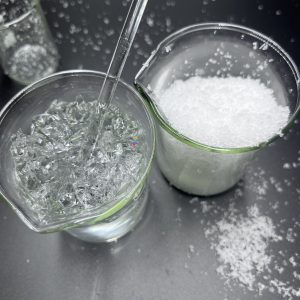Gel ice packs, often referred to as cold packs, are a modern substitute for traditional ice bags. They serve a variety of functions, such as lowering the body’s temperature, transporting medicines, food, and flowers, and providing emergency pain relief for sports injuries.
Unlike traditional ice bags, gel ice packs have become increasingly popular due to their numerous advantages. Here, we explore the key benefits and the main chemical component, sodium polyacrylate, which makes these packs so effective.

Advantages of Gel Ice Packs
Soft Feel and Nice Appearance: Gel ice packs are designed to be soft to the touch and visually appealing.
Bacteria Control: These packs effectively curb the breeding of bacteria.
Higher Efficiency: With a specific heat capacity 3-4 times that of ice, gel ice packs are significantly more effective.
What Chemical is in Ice Packs?
The primary chemical in gel ice packs is sodium polyacrylate, a type of superabsorbent polymer that can absorb large quantities of water and convert into a gel form. Just one gram of sodium polyacrylate can absorb between 300-1000 grams of pure water, making it extremely efficient. Typically, each gel ice pack contains less than a gram of sodium polyacrylate.
Advantages of Sodium Polyacrylate:
High Specific Heat Capacity: This ensures the pack remains cold for extended periods.
Low Cost: Each gel ice pack is inexpensive to produce.
Non-Toxic & Environment Friendly: Sodium polyacrylate is safe for use and environmentally friendly.
Other Applications of Sodium Polyacrylate
Beyond gel ice packs, sodium polyacrylate is utilized in many aspects of daily life:
Thermal Insulation Materials:
Found in products like ice towels and ice pillows.
Absorbent Materials: Used in paper diapers, sanitary napkins, and nursing pads.
Water Blocking Materials: Used in inflatable sandbags and waterproofing for cables.
Expanding Materials: Utilized in inflatable toys.
Common Questions About Gel Ice Packs
Is the Gel Inside an Ice Pack Toxic? No, the gel inside these packs is generally non-toxic.
How to Dispose of Gel Ice Packs? Disposal guidelines vary, but typically they can be thrown away in regular waste.
How to Recycle Gel Ice Packs? Check local recycling guidelines, as some components may be recyclable.
How Long Do Gel Ice Packs Last? Gel ice packs typically last for multiple uses, depending on care and usage.
What is Inside Gel Ice Packs? The main component is sodium polyacrylate, which turns into a gel upon absorbing water.
Gel ice packs are a versatile and efficient solution for a variety of cooling needs. Their primary component, sodium polyacrylate, offers significant advantages in terms of absorbency, efficiency, and environmental safety. Whether used for medical purposes, food transport, or simply to keep cool, gel ice packs are an excellent choice.

